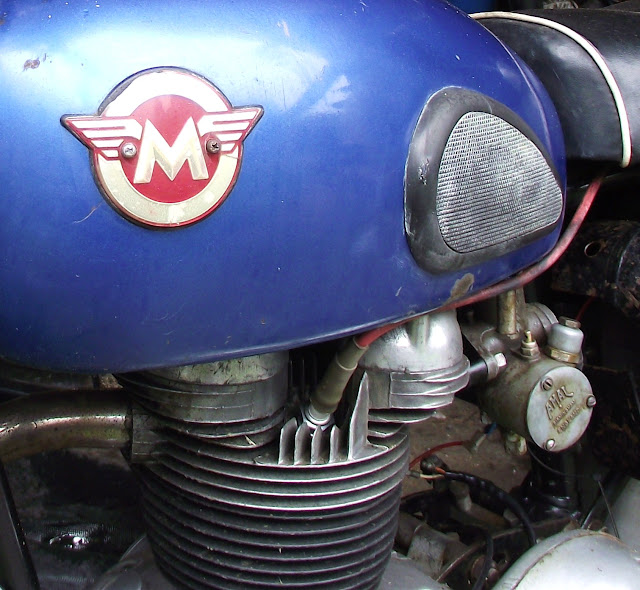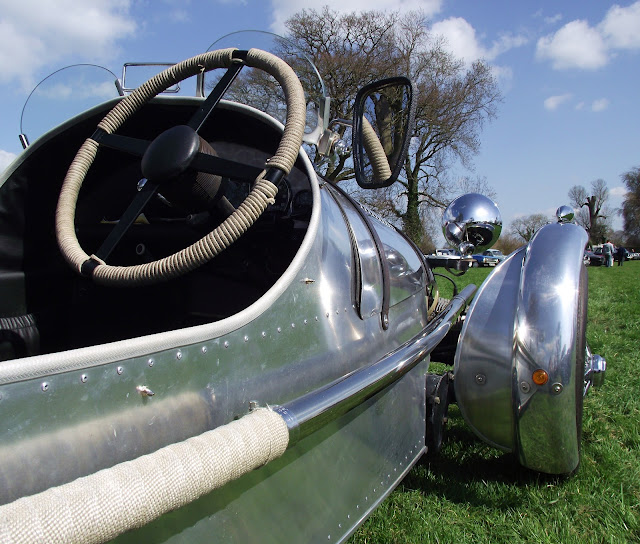Archaeology : Architecture : Art : Cold War : Curiosities : Design : Eccentricities : Ekco : Engineering : Industrial Heritage : Military : Petroliana : Photography : Shed Wonders : Transporter Bridges : Vintage Technology
29 April 2012
The People's Set
The Philadelphia Storage Battery Company, of Pennsylvania, started making batteries in the early 1900s. The Philco brand appeared in 1919. The development of the rectifier valve, which enabled radios to be powered from the 'mains', persuaded Philco to expand beyond batteries, and in 1928 they started making radios. A UK operation was set up in Perivale, Middlesex. American sets generally used more valves than British ones, which, given that the UK valve manufacturers operated a strict cartel, would have made a British Philco expensive. Philco thus set about developing a radio with fewer valves.
Introduced in 1936, the 444 was the first British Philco, its tombstone-shaped Bakelite cabinet pressed by Ekco. It sold for six guineas (£6.30), and was dubbed the People's Set. Some claim that the cabinet design was influenced by the bonnet of the Volkswagen 'Beetle', the People's Car, but only prototypes of the latter existed by 1936.
In fact, it was Philco that gave the set its name, trading on widespread adoption of the word "people" in the context of the Spanish Civil War. The set had initially sold poorly, but Philco's bit of cynicism turned that around spectacularly.
The set photographed is the 333, employing the same cabinet as the 444, but in this case powered by batteries.
Historical note: Philco was acquired by Ford in 1961, and ultimately by Philips in 1981, who until then had been prevented from using their similar-sounding trademark in the States. Philips still use the Philco brand.
Labels:
Design,
Vintage Technology
23 April 2012
Myddle Muddle

Gently mouldering away in a farmyard just outside Myddle, in north Shropshire, are a number of MG Midgets, MGBs, and a Triumph Spitfire. Doubtless the barns and lean-tos are home to yet more of the same.

Labels:
Shed Wonders
The Berth of Legends
Hidden away in north Shropshire, and on private land, is The Berth, a mid-Iron Age 'hillfort' of about 300 BC. The site has been claimed as the capital of the Welsh king Cynddylan, and as the Isle of Avalon, the burial place of King Arthur, though little archaeological work has been undertaken.
In plan, the fort is akin to a memorial ribbon, a smaller enclosure linked by a causeway to its larger cousin. The construction is not atop a hill, but upon marshland, and would have gained its defence by virtue of originally being surrounded by water. A sense of what the site may have been like is provided by the adjoining Berth Pool.
Labels:
Archaeology,
Trees
18 April 2012
Steaming Ahead
Last in steam in the early 1960s, Peter Clare's 10¼" gauge Canadian Pacific Hudson Class 4-6-4 live steam locomotive, on the move under its own power for the first time in half a century, here driven by its owner. A testament to the quality of its engineering and the determination of those involved in returning it to life.
Labels:
Engineering,
Shed Wonders
Matchless BSA

Matchless motorbikes were constructed in London's Plumstead from 1899, making the marque one of the oldest in British two-wheeler history. The marque was retained when, in 1938, Matchless and AJS were both taken under the banner of Associated Motorcycles but continued as separate entities. However, it didn't survive the 1960s, with the last single pot made in 1967, and the twin pot replaced by the Norton equivalent.
BSA motorbikes were just one of many products manufactured by the Birmingham Small Arms and Metal Co Ltd, the first built around 1906. A BSA-engined machine arrived in 1910, and the marque went on to be the largest motorbike manufacturer in the world. Inertia and cost inefficiency saw the market lost to Japan, and by 1973 BSA had been subsumed within Manganese Bronze Holdings, when the marque disappeared. Both machines are run by Leif Evans, British vintage bike enthusiast.
Labels:
Engineering,
Shed Wonders
13 April 2012
Rhiwargor, Powys
At the far end of Lake Vyrnwy, Powys, is an area known as Rhiwargor. Approached through the valley to the left of the photograph (left click to enlarge to full screen) is the eponymous waterfall, known locally as Pistyll Rhyd-Y-Meincau.
Labels:
Photography
12 April 2012
H Van A to Z
The Citroën H van, with its square form, low floor, and significant carrying ability, has been used over the years for virtually every purpose imaginable. Andy Bennett has about a dozen H vans, including those previously used as a betaillaire, charcuterie delivery van (in typical white and red livery, below), and by the Service Départemental d'Incendie et de Secours - the fire and rescue service.
Labels:
Engineering,
Shed Wonders
10 April 2012
Beating About the Bush

The Bush DAC10 was released in 1950, the same year as its cousin, the DAC90A. It was of a similar size but boasted more modern design cues, notably a louvred wrap-around grille that also featured in the company's TV22 television of the same year. Pre-programmed station settings were accessed by means of push buttons on the top of the radio. One could thus concentrate on other matters.
Labels:
Design,
Vintage Technology
03 April 2012
Brogyntyn Burrowings

North-west of Brogyntyn Hall is a Grade II listed tunnel of the nineteenth century, built of coarsely-shaped limestone, and carrying over the older road the drive that would have led to the hall.

Nearby is what remains of twelfth-century Castell Brogyntyn, the ringwork recently cleared of trees. The outer ditch is about 18 feet across and 12 feet deep, enclosing a circular area of about 260 feet in diameter, the central part used in the high days of the hall as a bowling green.
With its entrances in the ditch is a tunnel, about seven feet high, that runs right under the castle remains, curved in plan, and likely part of the eighteenth-century landscaping of the park.
Labels:
Architecture,
Curiosities,
Engineering
01 April 2012
April Fools' Car Show

Hosted by Fiona MacDonald and Iain Campbell at Canal Central, Maesbury Marsh, Oswestry, was the inaugural and informal April Fools' Car Show.
Over 40 cars attended, including this Pembleton Brooklands, based on a Citroën 2CV and powered by a BMW motorbike engine, which carried away the trophy for Car of the Show.
Attendees included three Reliant Scimitars (above), one of which was a Sabre, and a Humber Sceptre in glorious condition.
A number of vehicles of the Morris and Triumph marques, including a lovely TR4 (top), were in evidence, and a very nice Hillman Minx (below).
Bikes included what can only be described as a bonkers 2,300cc Triumph Rocket III (below) ...
... and a beautiful JAP Enfield. It's good to know that Mad Max lives! A very good turnout.

Labels:
Engineering,
Shed Wonders
Dobby Dray
On site at the April Fools' Car Show, courtesy of Peter Clare, was this beautiful vintage roundabout, complete with hand-painted mounts and vacuum-induced music.
Built in the 1900s, and thus well over a century old, the roundabout, lovingly restored, has been campaigned all over northern Europe. An absolute delight from a more innocent age.
Labels:
Art,
Curiosities,
Vintage Technology

















